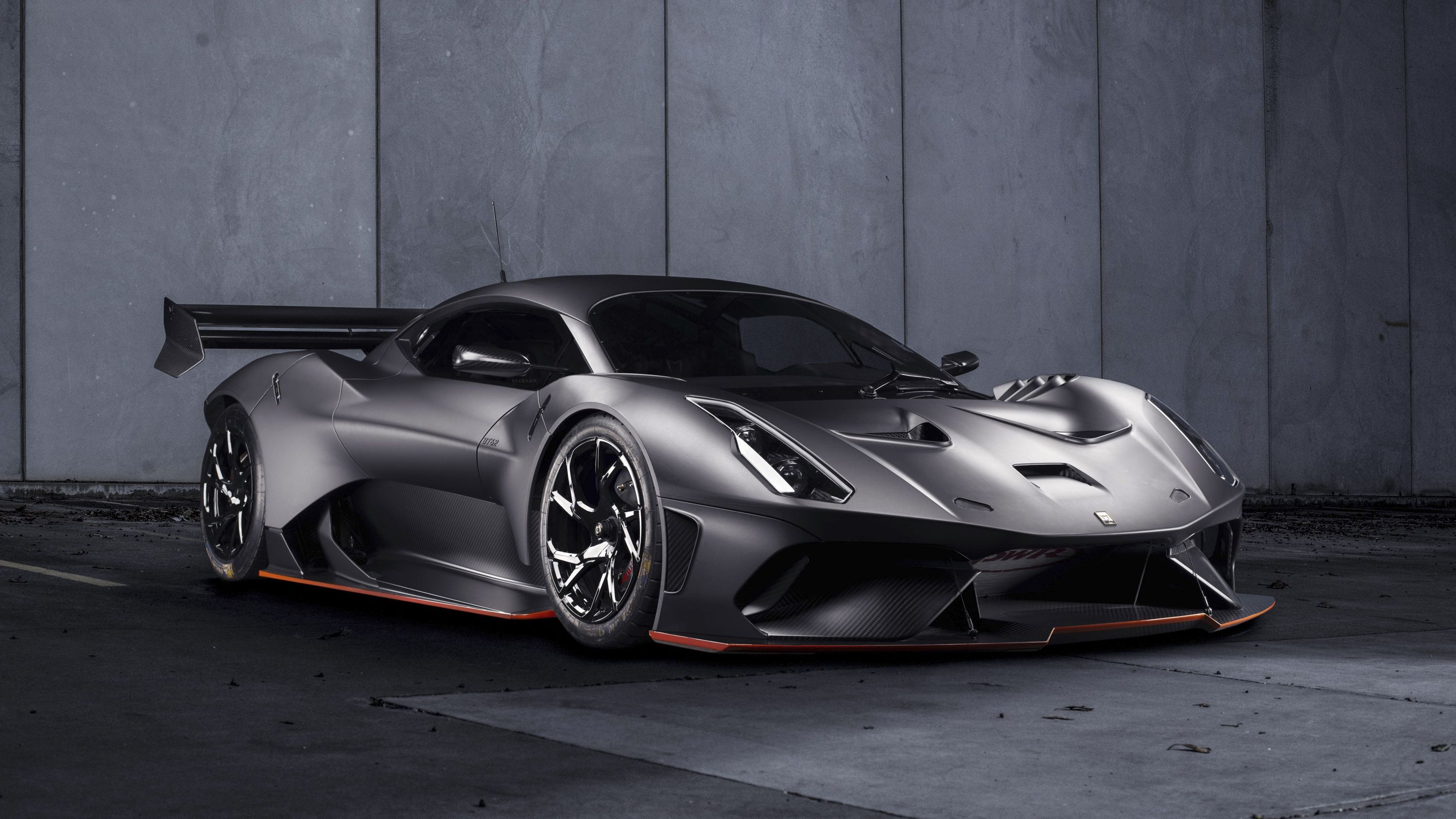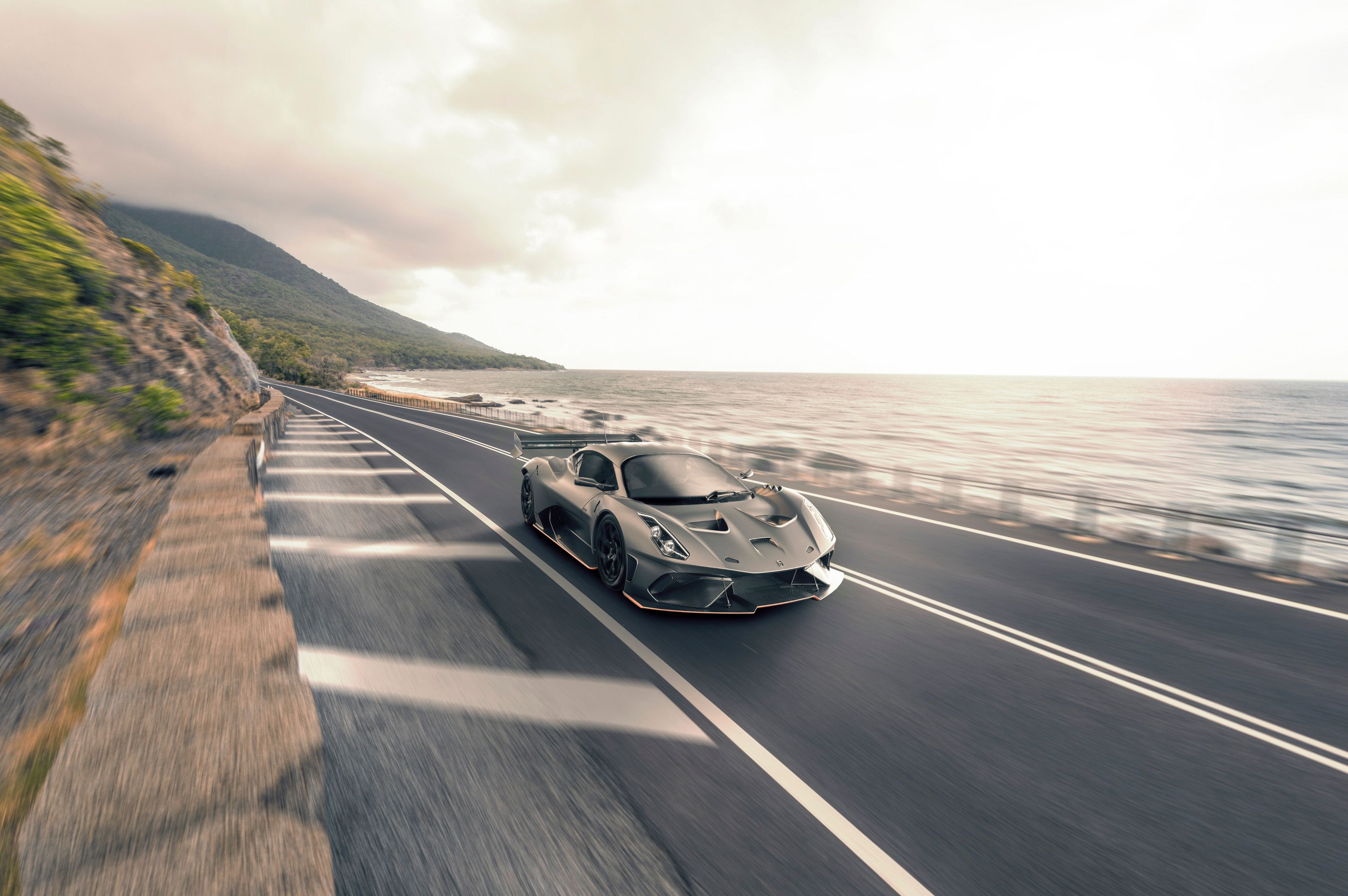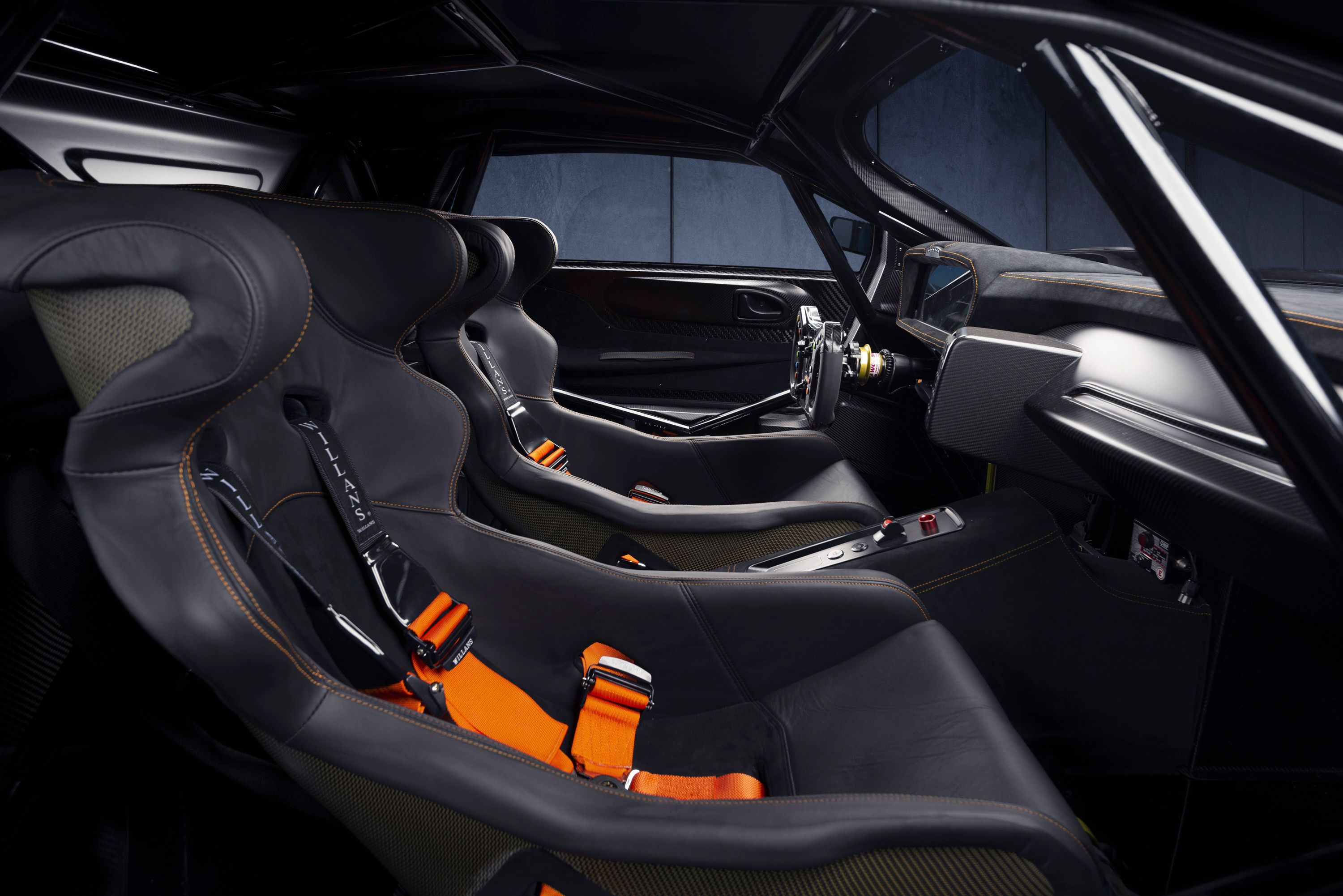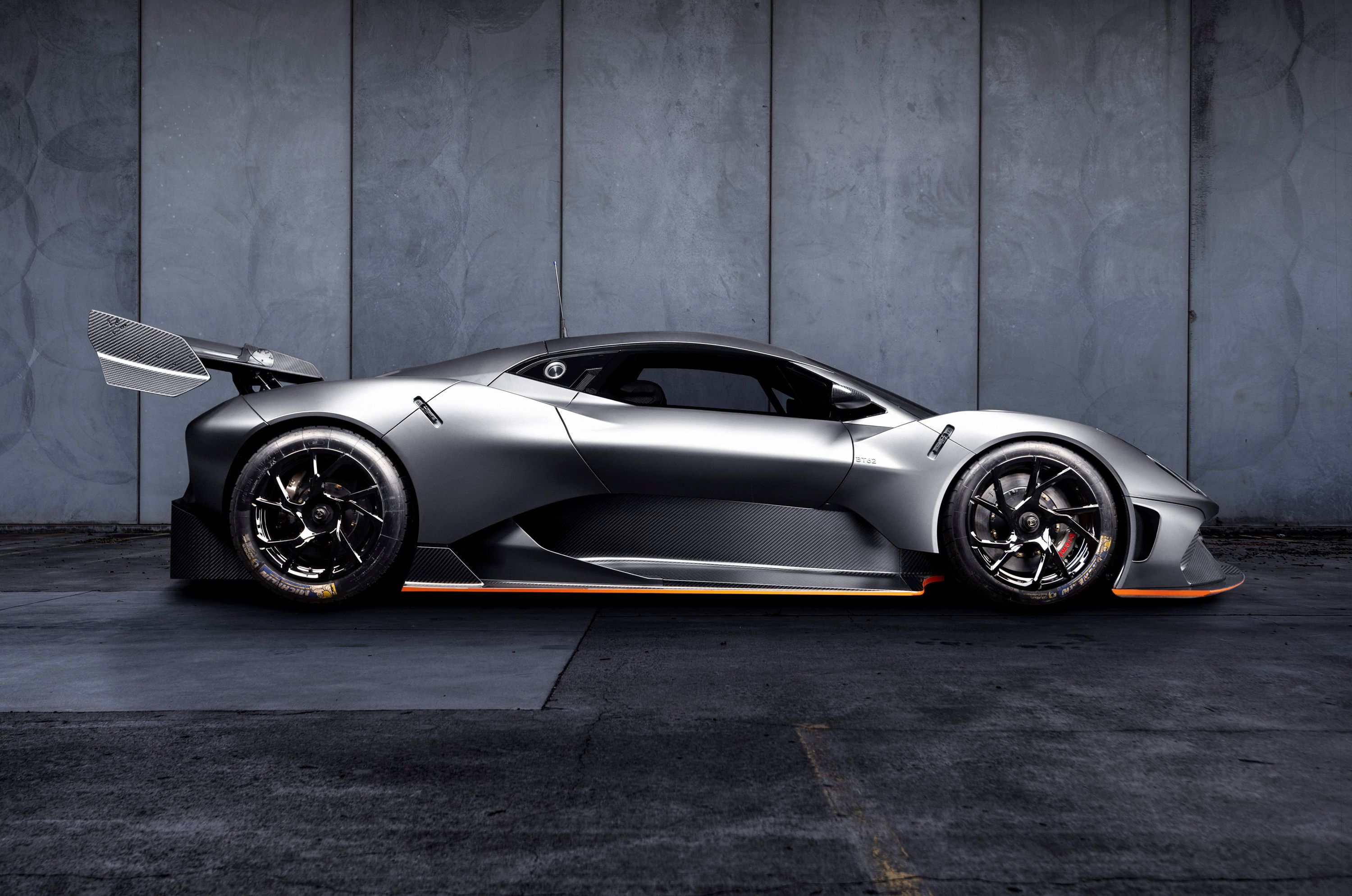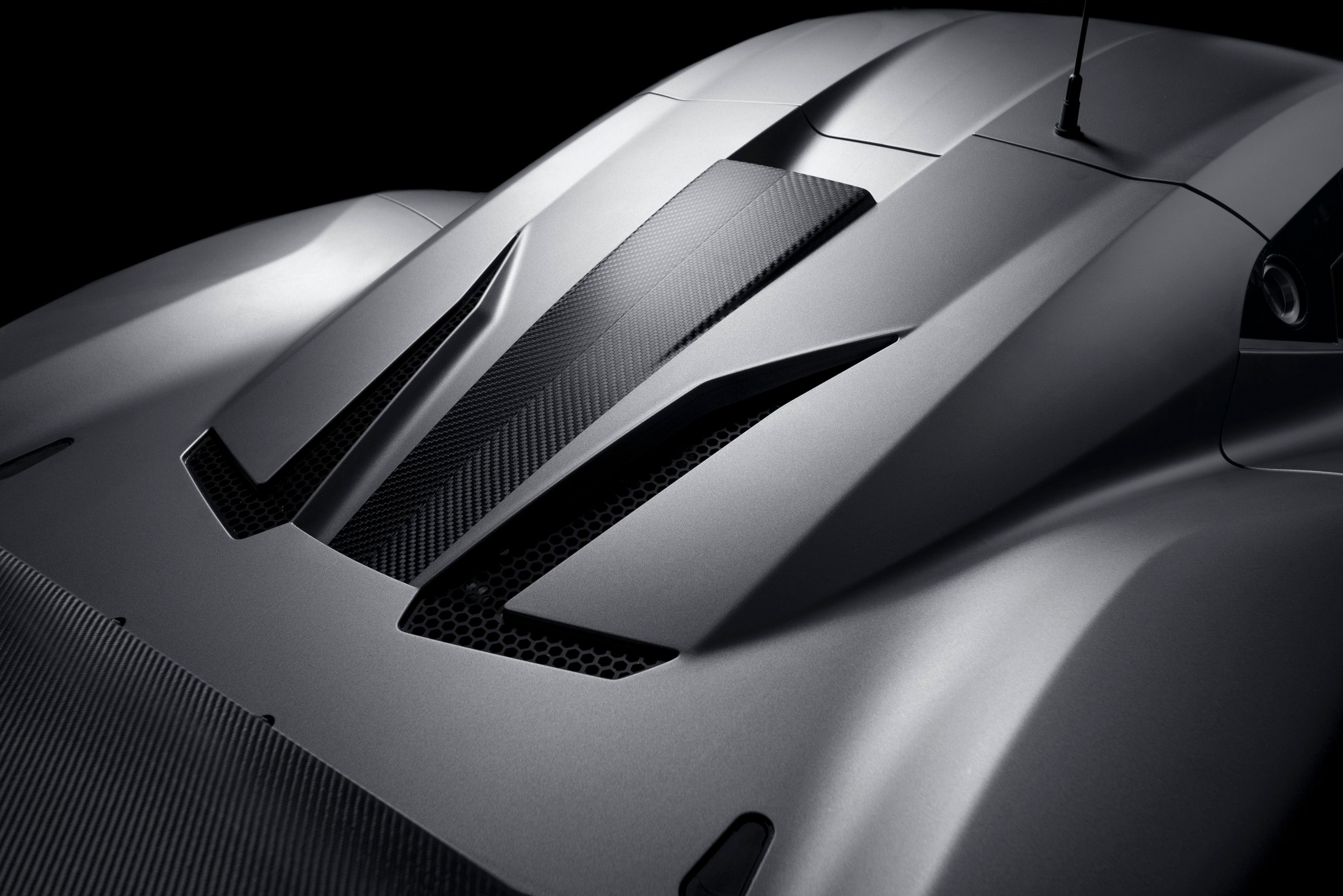Brabham Automotive launched its first new car since 1992, the brutally quick BT62 track car, last year and, now, we're learning more about how the whole 'track car' thing can be morphed into 'road car' if you can pony up an additional $190,000 over the $1.4 million price tag that David Brabham's company asks for these things.
First of all, let's remind ourselves what the Brabham BT62 is and what it is not. It is a purpose-built track car in the vein of the Pagani Zonda R or the LaFerrrari FXX-K that boasts a 5.4-liter V-8 attached to the chassis right behind the headrests that develops 700 horsepower and 492 pound-feet of torque, all stuffed in a car that weighs just 2,142 pounds. It also is a four-wheeled savage, delivering such a brutal driving experience that you need to go through a training program before you can actually gather track miles on your own. Now, what the Brabham BT62 is not, or wasn't conceived to be, is a road car.
Brabham, though, listens to its customers and, although plans are in place for a future bonafide road car to be made under the Brabham name, some customers want to be able to take this car, the BT62, to the shops and to and from the race tracks without needing a truck to tow it. That's why a conversion kit has been designed by Brabham, and it will be available, although there's a catch if you're not living in a European country.
A Brabham BT62 for the Road is Like Having a Slightly Modified Apache Chopper for your Own Non-Military Use
It's worth pointing out that we've known since July that Brabham is actually able to convert the track-only BT62 into a road car, thanks to a Jalopnik report where a "Brabham insider" describes the process. Now, we have David Brabham's own comment on the matter, David being, obviously, the son of co-founder Sir Jack Brabham and the one who revived the operation.
"We designed the BT62 to be an unrestricted, thoroughbred track car, and our extensive test program has revealed it to be all of those things", he argued, quoted by Autoblog. "This isn't a car designed for the road. With that said, it's clear some customers are keen to have a road compliant option with their BT62, particularly to drive to and from the track. My father Jack was always customer focused, and we will continue with that ethos."
So, what does this process entail?
First of all, the "Road Compliance Conversion" kit is aimed at European customers, although, as Jalopnik revealed, "Brabham will, apparently, have a consultation with clients to see how feasible it’ll be to have your BT62 road legalized for the place of your choosing and how it’ll fit with local regulations." The kit comprises lifting the ride height to give the BT62 the slightest of chances to ever clear any speed bumps or curbs. The steering lock range will also be bigger after all is said and done. Most likely, the body will receive extra indicators and, inside, an air conditioning system will be fitted, more upholstery to cover the spartan cabin and door locks and immobilizers.
According to Brabham, cars that undergo this procedure at its headquarters in U.K. - everything taking place before the owner actually receives his car - will go through the Driver and Vehicle Standards Agency’s Individual Vehicle Approval (IVA) test. If all goes well, the car will receive British plates for a period of 12 months. These plates will, obviously, need to be renewed on a yearly basis and, obviously, if you don't actually reside in the U.K., there's the issue of the local laws regarding cars driving around on foreign plates that needs to be dealt with. It all depends on the country you're living in but, bottom line, it can be done.
2018 Brabham BT62 Specifications
|
Engine |
Brabham 5.4l V8, 32 valve, quad cam engine |
|
Bore & Stroke |
Bore 94 mm / Stroke 97 mm |
|
Horsepower |
522Kw (700bhp) @ 7400 rpm |
|
Torque |
667Nm (492lb/ft) @ 6200 rpm |
|
Throttle Control |
Drive-by-wire electronic individual throttle bodies |
|
Exhaust |
Motorsport exhaust system (98dB) |
|
Oil System |
Dry sump lubrication |
|
Engine Control |
Motec engine control |
|
Transmission |
6 speed Holinger motorsport sequential transmission |
|
Fuel System |
Flex Fuel Capable |
That means that you'll have to be extra-careful driving the BT62 around town, especially if it's wet because, as Brabham's Director of Marketing and Sales, James Haskey, put it, "the car isn’t massively reliant on electronics." In other words, it will spin its wheels exiting a roundabout, and you'll end up in the nearest ditch if you aren't gentle with the loud pedal. Then again, look at it! What other road car compares in terms of appearance alone? Some of you might jaunt up and yell "Senna!" and that wouldn't be wrong.
Also, Lanzante Motorsport is converting McLaren P1 GTRs for road use, and that's even closer to the BT62. It's also more powerful with 986 horsepower from that Nissan-derived 3.8-liter that benefits from the help of an electric motor that gives 177 horsepower of the total 986 and 192 pound-feet of torque. The result is a top speed of 225 mph and a 0 to 60 mph sprint that's done in under 2.5 seconds.
The BT62 Isn't the Nicest Name for a Car, but There's a Good Reason Behind It
Brabham was founded as Motor Racing Development (MRD) by Sir Jack Brabham and Ron Taurnac. Their first car was known as 'MRD' which didn't sit too well with French fans for obvious reasons. Later on, the Brabham name was adopted, and each model received a model designation starting with 'BT.'
Between 1962 and 1970, the year Jack retired from Formula 1 after narrowly missing the World Driver's Title than went posthumously to Austria's Jochen Rindt, Brabham bagged to World Driver's Titles and two World Manufacturer's titles, in 1966 and 1967. Denny Hulme took the crown in '67 after Jim Clark's title hopes were dashed due to the Lotus 49s reliability woes. While the BT19-BT24 models were much more conventional compared to the 49, they proved bulletproof and did their job of gathering serious silverware for Brabham. The team was also close to the manufacturer's title in 1969. After Brabham's retirement, Tauranac managed the operation until 1972 when the team was sold to Bernie Ecclestone. Soon after, the team struck a sponsorship deal with Martini, a time when Gordon Murray, the designer of the McLaren F1, acted as Chief Designer.
In 1978, after a number of lackluster seasons that saw Brabham switch from the traditional Cosworth DFV engines to Alfa Romeo V-12 units with little in terms of results to back Bernie's decision, Murray came up with a way to catch up to the then-dominating Lotus 79 that employed ground effects. His solution was the BT46B, commonly known as the 'fan car,' as it had a fan that would suck air from underneath the car to make it stick the ground, basically the same principle that stood behind the Chaparral 2J that raced in the Canadian-American Challenge Series in 1970.
The car won one race, the Swedish Grand Prix, but Ecclestone retired it from competition after backlash from rivaling teams regarding the car's legality. This happened at a time when the Briton was heavily implicated in the FOCA (Formula One Constructor's Association), becoming its president that year. He managed to strike a deal with the other teams to allow the BT46B to race three more times without the teams leaving the FOCA as they'd previously threatened. However, the International Sporting Commission stepped in and banned "fan cars" altogether.
As 8W recounts, "The debate centered around the fuel samples taken after the Italian GP and the European GP at Brands Hatch. Both races fell victim to a resurgent Piquet, who in all probability would have won at Zandvoort as well if Prost hadn’t punted the Brazilian off into Tarzan corner. The post-race octane readings at Monza and Brands indicated that the rocket-fuel brew supplied by BASF subsidiary Wintershall to BMW in the latter part of the season was up to 0.9 RON over the regulated 102 RON." Basically, at the time, you could use any kind of fuel blend as long as it wasn't above the top octane rating available on the market.
After 1983, Brabham never once claimed any world title. Arguably, the team started going on a downward spiral in 1986, the year Elio de Angelis died while testing at Paul Ricard after the wing on his BT55 broke off at high speed. After 1987, the team didn't compete at all in 1988 and Ecclestone sold Brabham to EuroBrun owner Walter Brun. He then sold it on to Joachim Luhti who revived it and brought it back to the grid in 1989. The team's last ever podium in F1 came that same year, Stefano Modena finishing third at the Monaco Grand Prix.
Luhti was imprisoned midway through 1989 after he was found evading taxes. Brabham (or Motor Racing Developments as it was entered in race events) was bought by Middlebrige Racing. Judd and Yamaha offered the power to the final Brabham cars that were designed by Sergio Rinland. In 1991, the team scored its last three championship points and then, in 1992, the team tanked once and for all. Not even future world champion Damon Hill could help, his best finish that year being an anonymous 11th at the Hungarian GP.
After 1992, the team was supposed to be brought back to life again for 1993 by Galmer Engineering, led by Alan Mertens. His outfit received the two BT60Bs used in 1992 and Mertens set about designing the BT61 as an improved version of the BT60B. The money was supposed to come from a pair of investors that never raised to their end of the bargain. According to UnracedF1, "Galmer negotiated a contract which required the team’s investors to pay Galmer $500,000 to begin the work." However, the cash never arrived and, Alan remembers, "Sometime later the Inland Revenue turned up in March accusing me of fraud. The two men had claimed tax relief against the payment, and the Inland Revenue wanted to know why I hadn’t declared the sum as revenue during the course of the previous year."
Galmer escaped the accusations by proving that he'd never received any of the money. However, that meant that now there was nobody to back the Brabham outfit although an entry was made for the 1993 season with one driver already confirmed, namely Mexico's Carlos Guerrero. In the end, the Brabham team never emerged from the shadows and, to this day, there hasn't been another Brabham on a Grand Prix grid.
However, that didn't mean that the name returned right after to Brabham's family. Instead, as Autocar writes, "in 2009, a tuning company in Germany christened itself Brabham Racing and launched a heavily modified BMW M3 Coupé (E92)."
Then, rumors started making the rounds of a potential return of Brabham on the grid in 2010. These were, as it would turn out, unsubstantiated claims but they led David Brabham to do something about these assets that were floating about. He finally achieved legal protection of the brand in 2013. It took three more years for Brabham to find the backing for his ambitious project to become a reality and now, merely months away from seeing the first BT62 tackling the public roads, I think we can agree it was worth the wait. Also, you can understand why David & Co. decided to christen the car 'BT62' and not 'BT61' which would've resonated with memories of the still-born F1 car.
Further reading
Read our full review on the 2018 Brabham BT62
Read our full review on the 2016 McLaren P1 GTR
Read our full review on the 2018 Ferrari LaFerrari FXX-K Evo.

